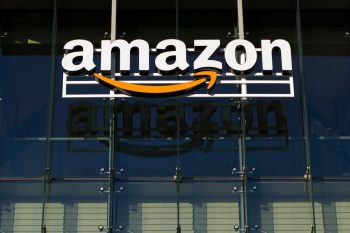
Amazon, the e-commerce behemoth, has revolutionized the way we shop and do business. Its innovative and diversified business model has made it a global leader in multiple sectors. But what exactly is Amazon’s business model? How does it generate revenue? And why is it so successful? This in-depth article will answer all these questions and more.
Amazon’s business model is a diversified one, primarily operating as an e-commerce marketplace that connects buyers and sellers. It generates revenue through retail operations, commissions from third-party sellers, subscriptions like Amazon Prime, Amazon Web Services (AWS), and advertising. AWS, a cloud services platform, is its most profitable segment. Amazon’s business model also stands out for its customer-centric approach, innovative logistics, and support of small businesses.
Amazon’s Primary Business Model
At its core, Amazon operates as an e-commerce marketplace, a platform that connects buyers and sellers. This model is customer-centric, focusing on providing a wide selection of products, low prices, and fast delivery. Amazon’s revenue streams are diverse, with the primary source being its retail operations, both online and through physical stores. This includes one-time sales, commissions on sales made by third-party sellers on its platform, and subscriptions, particularly through its Amazon Prime service.
Amazon also generates revenue from its web services, known as Amazon Web Services (AWS), which provides cloud services to businesses, government agencies, and academic institutions. Additionally, Amazon has an advertising business that is growing exponentially.
Amazon’s Marketplace Model
Amazon’s marketplace model operates as a two-sided platform that connects buyers and sellers. In this model, Amazon’s role is to match buyers and sellers, and it uses a search algorithm to help consumers find products. Products sold on the marketplace are delivered to the consumer’s home either by the seller itself or by Amazon, if the seller pays for that service. Amazon’s revenue in this model is generated by the fees sellers pay to Amazon.
The Role of Amazon Web Services (AWS)
AWS is a cloud platform offered by Amazon that provides servers, storage, networking, remote computing, email, mobile development, and security. AWS’s business model is based on cost savings, scalability, adaptability, security, and reliability. It allows companies to pay for what they use, with no upfront cost to build a storage system and no need to estimate usage.
Amazon’s Business Segments
Amazon’s business model includes several different segments that contribute to its overall business model. These segments can be broadly categorized into three operating profit segments: North America, International, and Amazon Web Services (AWS).
In addition to these three main segments, Amazon’s business model also includes several other revenue streams, including online stores, third-party seller services, subscription services, physical stores, and advertising.
Innovation at Amazon
Amazon’s business model is innovative compared to other e-commerce businesses in several ways, including its customer-centric approach, long tail economic model, omnichannel strategy, diversification, innovative logistics and delivery systems, two-sided network effects, Amazon Prime, and empowerment of small businesses.
Conclusion
In conclusion, Amazon’s business model is a complex interplay of various segments and revenue streams, with AWS being the most profitable. Despite the unprofitability of its core e-commerce business, Amazon’s diversified business model and ability to create transferable network effects have contributed to its overall success.
Whether you’re a business owner, a student, or just an interested reader, understanding Amazon’s business model can provide valuable insights into the dynamics of e-commerce, digital transformation, and business innovation.
Frequently Asked Questions
What is Amazon Prime and how does it contribute to Amazon’s revenue?
Amazon Prime is a subscription service that offers various benefits to its members, including free two-day shipping on eligible items, streaming of movies, TV shows and music, access to e-books, and more. The subscription fee provides a significant revenue stream for Amazon.
What is the ‘long tail economic model’ that Amazon uses?
The ‘long tail’ economic model refers to the strategy of selling a large number of unique items in relatively small quantities. Amazon leverages this model by offering a vast range of products, appealing to consumers with niche interests and needs, and thus increasing its overall sales.
How does Amazon empower small businesses?
Amazon empowers small businesses through its marketplace model, which allows third-party sellers to list and sell their products on the platform. This provides small businesses with access to a global customer base, without the need for a physical storefront or large marketing budget.
What is Amazon’s omnichannel strategy?
Amazon’s omnichannel strategy refers to its approach of integrating various shopping channels (online, in-store, and mobile) to provide a seamless customer experience. This strategy includes features like “buy online, pick up in store” and Amazon’s physical stores, which complement its online platform.
How does Amazon’s advertising business work?
Amazon’s advertising business allows businesses to advertise their products directly on the Amazon platform. Advertisers bid for ad space, and when a consumer clicks on the ad, they are taken to the product’s Amazon page. Amazon earns revenue for each click made on these ads.











